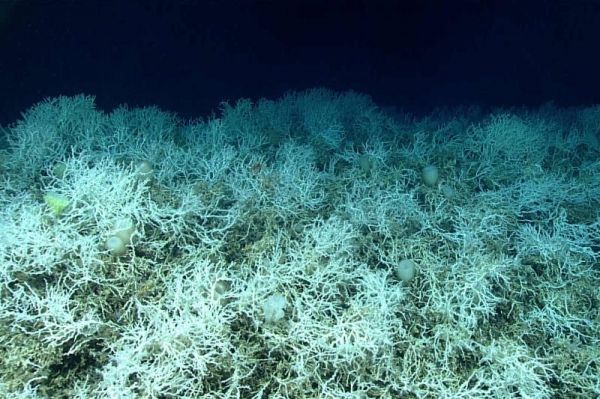NOAA’s Deep Sea Coral Research and Technology Program has completed its multi-year highly collaborative effort, known as the Southeast Deep Coral Initiative. Initiative collaborators explored and characterized deep-sea coral and sponge ecosystems in the federal waters of the U.S. South Atlantic, Gulf of Mexico, and U.S. Caribbean. Researchers completed 21 expeditions to survey deep-sea coral and sponge ecosystems using ships, submersibles (including remotely and autonomously operated vehicles), and other equipment. Complementary research projects conducted in partnership with universities focused on seafloor mapping, species identification, habitat suitability modelling, environmental and oceanographic monitoring, and data analysis.
Coral and Sponge Observations - Expeditions resulted in a 450 percent increase in the number of coral and sponge observations in the West Florida Wall. This area is of particular interest to the Gulf of Mexico Fishery Management Council due to its significant coral aggregations. These records informed the Council’s decision to combine three small proposed protected areas into one much larger and more effective one
Massive Coral Mounds - Mapping revealed that the central Blake Plateau, which was originally thought to be soft sediment, is actually covered with extensive mound features. They are composed primarily of Lophelia pertusa coral communities. Researchers have named this ecosystem “Million Mounds” and it contains some of the thickest Lophelia aggregates in the region.
Read more at: National Oceanic and Atmospheric Administration
Researchers discovered thriving Lophelia pertusa reefs in a region farther offshore and in deeper water than other known Lophelia reefs in the U.S. Atlantic. This image of “Million Mounds” shows healthy habitat with extremely high live coral cover. (Photo Credit: NOAA Ocean Exploration)


